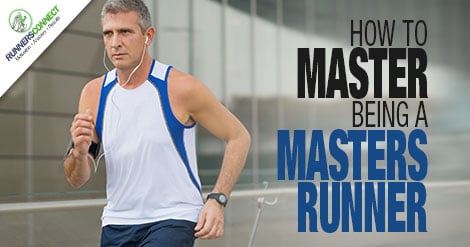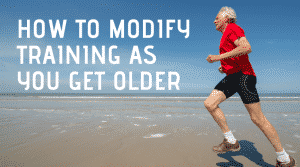Why do you race?
This is a simple question that may have a very complicated answer. The reasons why individual runners race, can be as varied as the shoes on their feet!
As much as we runners like to think that we’re invincible and that age will never impact our running performance, the truth is, it does.
After almost a full decade of running at the masters level, I’ve experienced these effects first hand. I’ve had to change and adjust my approach to training and as I stare down 50 next year, I know that the changes will need to keep coming.
Let me say that masters running is not all gloom and doom—in fact, in some ways I enjoy it more than I did as a younger athlete. But it does require some adjustments and the smart runner will learn to train differently at 45 than he or she did at 35.

Strength work is non-negotiable
One of the biggest issues masters runners need to comprehend is that there is less margin for error.
The risks you might have taken as a younger athlete—and gotten away with—are risks you can no longer take.
For instance, you can’t add on miles or dial up the pace in a prescribed workout. You also can’t cut corners by skipping all the auxiliary work that goes into running.
Speaking of the auxiliary work, it is more important as a masters runner than ever before. I used to take entire race seasons away from strength training. Now, it’s non-negotiable. I incorporate it two times each and every week, plus I include stability training on a daily basis.
Why so important?
First the strength training part: as we leave our 20s, but especially as we cross over the 40-yr. mark, we lose muscle mass at the rate of three to five percent per decade if we are inactive, and around one percent if we remain active.
That muscle loss translates to reduced running economy (our VO2 max at any intensity).
If we counteract that muscle loss via heavy strength training, however, we can maintain a similar running economy and endurance performance, according to a 2013 NIH Study.
The stability work becomes especially important in our 40s because by this stage in our lives, we’ve developed imbalances and poor movement patterns from injuries and our more-sedentary-than-not Western lifestyles.
Deficient function of any component of movement will increase your injury risk, according to a 2013 article by Dr. Trent Nessler in the International Journal of Athletic Therapy. Speaking from experience, these are the things that have hurt me more than training errors.
In order to counteract these accumulated affects, I religiously perform exercises that enhance my balance, my hip stability, and my glute activation. Among my favorites are single-leg deadlifts, a split-lunge rotation, clamshells, and single-leg bridges.
Finally, masters runners cannot overlook flexibility training, but by this, I do not mean a static stretching routine.
Instead, focus on tissue mobility via dynamic warm ups and soft-tissue release with tools like foam rollers (are you making the 4 common foam roller mistakes?), mobility balls, and compression bands.
Conclusion
The bottom line is that masters runners can keep running productively well into their final decades, IF they are willing to make some adjustments to overall training approaches.
Your running machine at 50 is not the same machine it was at 30. Become a different/better mechanic and you’ll enjoy many years of running to come.
If you would like more information on running as you age, read our post; running as you age, is it all bad?







2 Responses
Amanda’s comments are on point. I am now (gulp) 64 years old, returning to running on/off after hamstring injury 5 years ago (just after qualifying for Boston and New York marathons at age 58 but in age 40 time qualifiers). I am currently training for half marathon, having done several 5k and 10k’s these past few months. Additions to my routine: Pilates (2x/week); strength training (3x/week), stretching and foam rollers after running; foot work before running, limiting running to every other day (this was the most difficult), massage (about 2x/month) BUT still love to run and will continue as long as possible. I see a few runners in their 70s and 80s and want to be one of them when I get older!
Thanks for sharing your thoughts Patricia! No need to gulp at 64, we have plenty of inspiring runners much older than you who we need to learn from. Thanks for sharing what works for you, and glad you see others as inspiration. Did you listen to our podcast with Margaret Webb? You would really enjoy it- https://runnersconnect.net/running-interviews/margaret-webb/